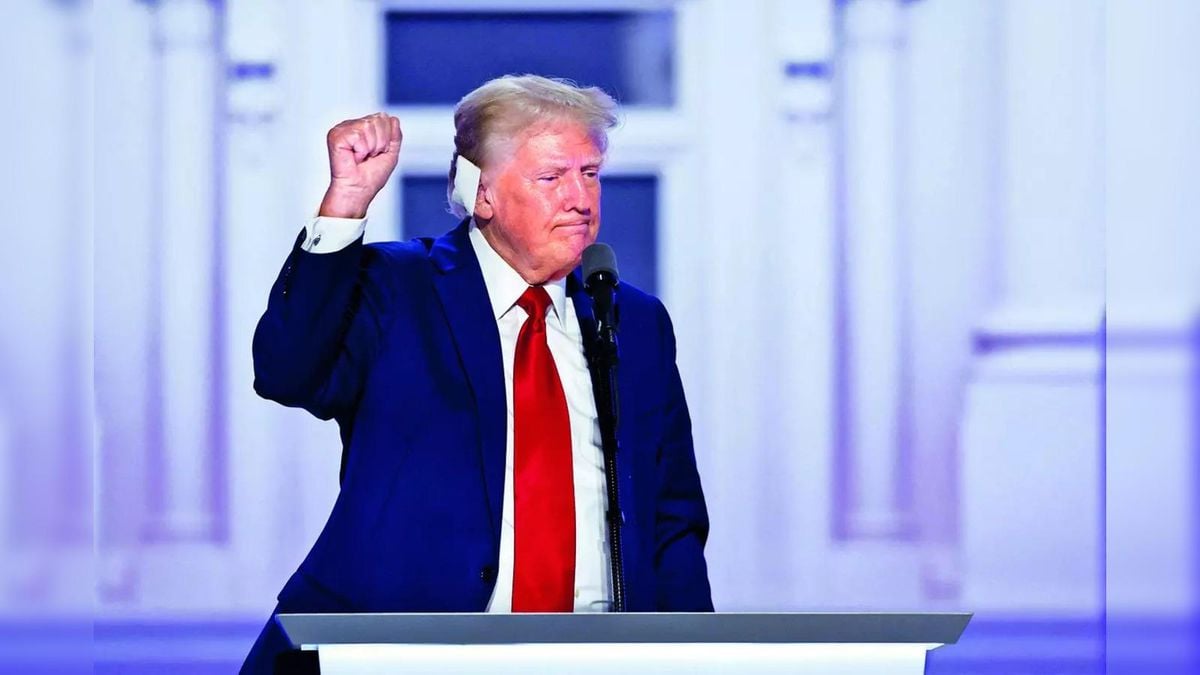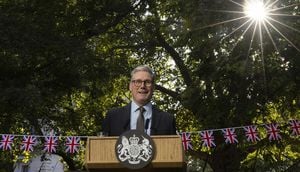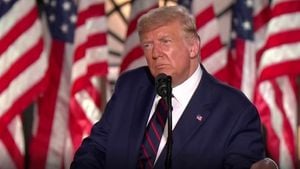Discussion around sovereign wealth funds has sparked renewed interest recently, especially following comments made by former President Donald Trump. While delivering remarks at the Economic Club of New York, Trump proposed the establishment of a U.S. sovereign wealth fund, hinting at its potential to fund significant national projects and improve American infrastructure. He asked, "Why don’t we have a wealth fund? Other countries have wealth funds. We have nothing.” This statement came at a time when economic policy discussions were fewer, perhaps to add heft to his ideas among policy enthusiasts.
Although Trump did not share many specifics concerning how such a fund would function, he mentioned it could be backed by tariffs and other strategic revenue-generation methods. He envisaged using the fund for "extraordinary national development projects"—from highways and airports to supporting state-of-the-art manufacturing hubs and cutting-edge medical research. Yet, concrete details remained elusive as he shifted focus to potential names for the fund rather than elucidate how it would operate.
Interestingly, the Biden administration is also rumored to be exploring the idea of creating a sovereign wealth fund. National security adviser Jake Sullivan is reportedly holding weekly discussions on the subject, accompanied by his deputy, Daleep Singh. While many policy documents are circulating as part of these discussions, not everyone is on board; Jared Bernstein, chairman of the Council of Economic Advisers, expressed skepticism, stating he had yet to hear serious consideration of the idea during meetings.
Timothy Noah, writing for The New Republic, echoes the sentiment of skepticism surrounding Trump's proposal. He outlines the fundamental challenge: the U.S. is encumbered with about $35 trillion of national debt and runs annual budget deficits surpassing $1 trillion. Countries typically launch sovereign wealth funds during times of budget surpluses—conditions quite distinct from those existing across the Atlantic, where debt serves as more of a fiscal crutch than any asset.
To draw examples from history, Kuwait developed the first sovereign wealth fund back in 1953, utilizing revenues from oil reserves. It has become commonplace for nations rich in natural resources—like Botswana with diamonds or China stemming from rapid industrialization—to establish such funds. These countries often use them as safety nets against market volatility or invest funds to stimulate broader economic growth.
Alaska’s Permanent Fund is the most notable sovereign wealth fund within the U.S., offering dividends to residents funded by oil revenue since the 1970s. Conversely, the U.S. federal government lacks similar revenue-gushing assets typical of nations with sovereign wealth funds. The idea of utilizing resources effectively is not absent—for example, the federal government owns large parcels of land—yet the current management systems do not capitalize on available assets optimally, leading to below-market leasing arrangements for resources.
Even the concept of uncollected fees for resources such as oil and gas extraction raises questions about what could represent an unofficial sovereign wealth fund. Tim Barnes posits the idea of charging businesses extracting natural wealth from public resources appropriately—essentially reimagining the value of wealth perceived as inherently co-owned and distributing the proceeds more fairly. His book, With Liberty and Dividends for All, suggests creating funds based on wealth extraction as potential means for recovery for those marginalized by economic transitions.
Barnes’ proposal finds roots dating as far back as the writings of Thomas Paine, who argued for the establishment of funds to collect payments from landowners, which would then benefit the broader populace. Yet, the crux remains: the U.S. government tends to focus on managing debt rather than investments for future growth, evidenced by the proposition of using debt to recover from crises rather than leveraging wealth for new opportunities.
To put it succinctly, the concept of establishing a sovereign wealth fund within the U.S. carries weight but faces serious hurdles considering the current fiscal climate of debt and deficit. The divergence seen between the U.S. and other nations with successful funds presents significant questions about practical implementation and overarching financial health.
Transitioning to the global arena, Saudi Arabia's Public Investment Fund (PIF) recently announced plans to invest $5 billion in Egypt, marking the first phase of projected investments aimed at bolstering ties between the two nations. Such financial commitments not only signify Saudi Arabia's aim to extend its economic influence but also reflect broader regional dynamics and understandings. The Saudi cabinet framed this injection as part of larger strategic investments planned for the coming years, meaning this could be the start of what could become significant economic engagement with neighboring nations.
The Saudi approach to investment mirrors smaller structures often seen within sovereign wealth funds, where wealth is accumulated primarily to fuel future economic development and investment opportunities. This model has proven beneficial for numerous countries, allowing them to strategically allocate resources according to national interests.
Nonetheless, as discussions around U.S. sovereign wealth fund proposals heat up, it emphasizes the varying national approaches to investments and the intricacies of financial management across the globe. Future discourse may reveal how the stormy world of finance interacts with political agendas, particularly as upcoming elections loom and leaders propose sweeping changes to bolster national priorities. The viability of such dramatic policy shifts may hinge not only on economic theories discussed today but also on political realities facing a complex financial system.




